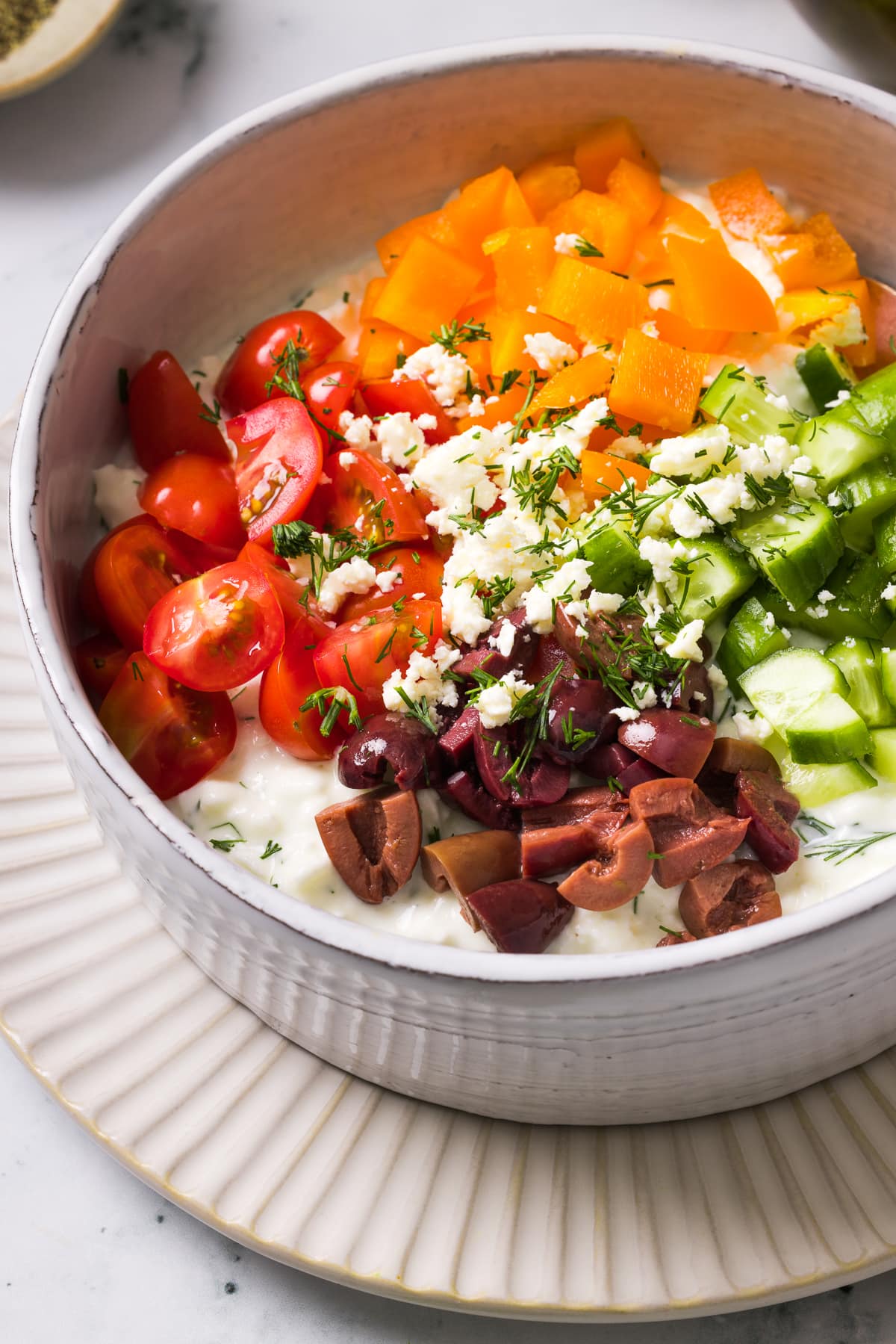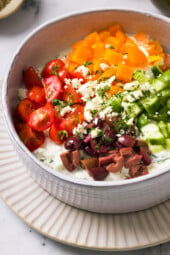
This savory Greek Cottage Cheese Bowl is an easy high-protein breakfast or lunch that is fresh and flavorful and doesn’t require any cooking.
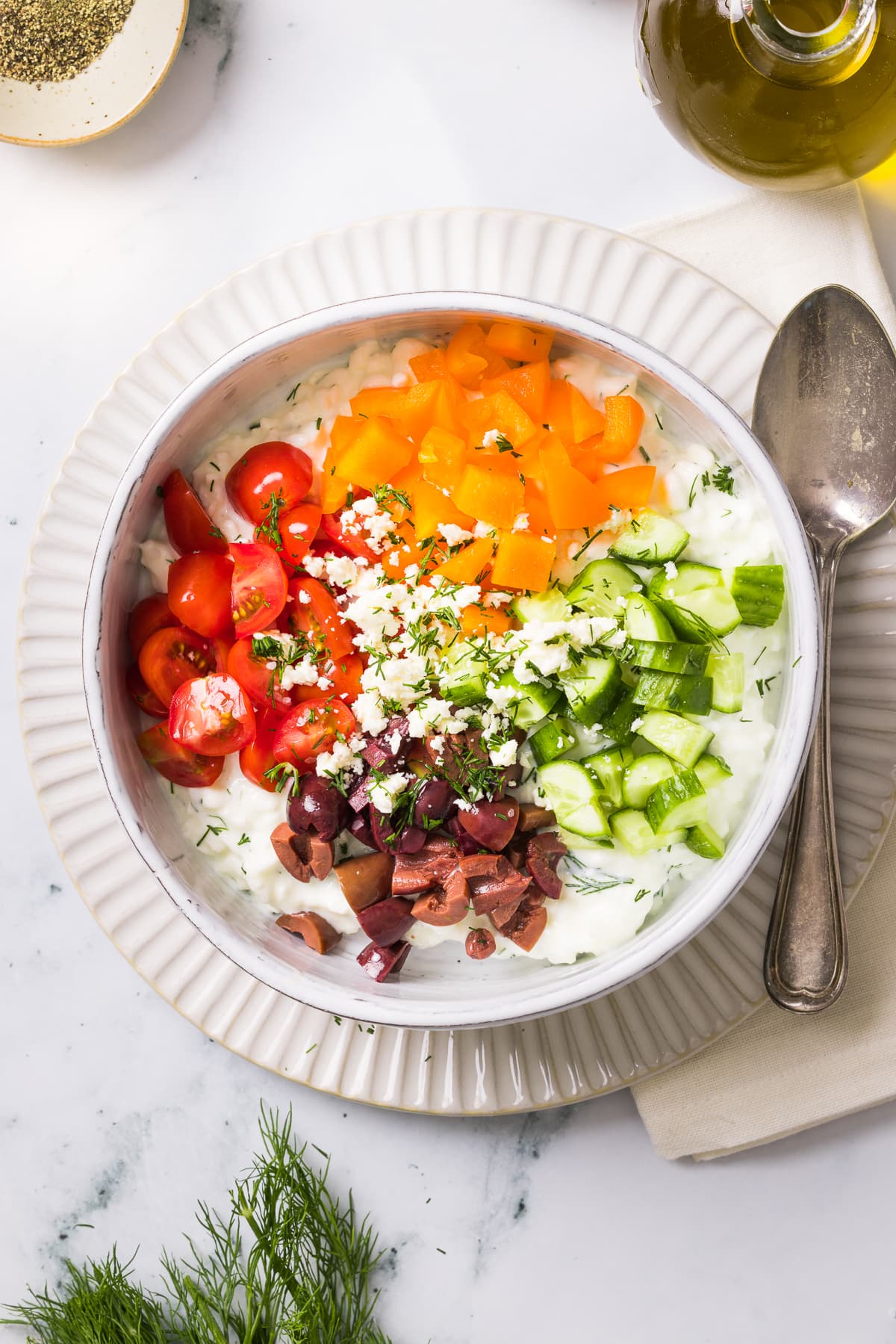
Greek Cottage Cheese Bowl
Need a quick lunch that doesn’t require cooking or reheating? Then you’ll love this recipe! I created this savory cottage cheese bowl inspired by a Greek salad with tomatoes, cucumbers, bell pepper, kalamata olives, feta, and fresh dill. I’ll be making this cottage cheese lunch bowl all summer, it couldn’t be simpler. Just chop the veggies and combine everything in a bowl. It’s fast, delicious, and packed with protein. More savory cottage cheese bowl recipes you may like are this Burst Tomato Cottage Cheese Caprese Bowl and Savory Cottage Cheese Bowl. And if you prefer a sweeter bowl, try this Berry Cottage Cheese Breakfast Bowl.
Is cottage cheese healthy?
Cottage cheese is a low-carb cheese that’s packed with protein. One cup has 25 grams. Not to mention, it’s an excellent source of calcium. It’s so versatile and great for everything from lasagna with cottage cheese, to bowls to baking to eggs.
Ingredients
- Cottage Cheese: I used Good Culture’s 2% cottage cheese. It’s my favorite brand, but any will work.
- Dill: Chop a tablespoon of fresh dill.
- Vegetables: Cherry tomatoes, yellow or orange bell pepper, mini cucumbers
- Salt and Pepper to season the veggies
- Olives: Chop pitted Kalamata olives.
- Feta crumbled on top
- Olive Oil for drizzling if desired
How to Make Greek Cottage Cheese Bowls
- Mix the cottage cheese and half of the dill in a small bowl.
- Add the veggies and season with salt and pepper.
- Top with olives, feta, and remaining dill, and drizzle with olive oil.
How to Meal Prep Cottage Cheese Bowls
These Greek cottage cheese bowls are perfect for a quick and easy lunch. You can cut the bell peppers, cucumber, and olives up to three days before you eat them. Store them in one container and the cottage cheese and dill in another. Wait to cut your tomatoes until right before eating them so they don’t get soggy.
Variations
- Not a cottage cheese fan? If you don’t like the texture, puree the cottage cheese until smooth, or substitute it with Greek yogurt.
- Tomatoes: Swap cherry with grape tomatoes, or seed and dice a vine- ripened tomato.
- Cucumbers: Substitute an English cucumber. If you use a regular one, peel and seed it before dicing.
- Vegetables: Add shallots, green onions, radishes, or beets.
- Nuts: Top with pine nuts, almonds, or pistachios.
- Seasoning: Sprinkle with everything bagel seasoning, onion powder, or garlic powder.
- Briny Flavor: Add capers or artichoke hearts.
- Herbs: Top with fresh parsley, basil, or mint.
- Serving Suggestion: Dip pita bread or chips in this Greek cottage cheese bowl.
Cottage Cheese vs Greek Yogurt
Both cottage cheese and Greek yogurt are nutritious dairy products that can be part of a balanced diet. They each offer unique benefits, but they also differ in a few key ways:
Protein Content: Greek yogurt is usually slightly higher in protein compared to cottage cheese, although the exact amount can depend on the specific brand or variety. Greek yogurt is strained to remove liquid whey, resulting in a thicker texture and a higher concentration of protein.
Carbohydrate Content: Plain Greek yogurt tends to have a slightly higher carbohydrate content than cottage cheese. This is primarily due to the natural sugars (lactose) found in milk.
Calcium Content: Both Greek yogurt and cottage cheese are good sources of calcium, but cottage cheese usually contains less calcium compared to Greek yogurt.
Texture and Taste: Greek yogurt has a thick, creamy texture and a tangy taste, while cottage cheese is made of curds with a mild, slightly sweet flavor. If texture is an issue, you can also whip the cottage cheese.
Versatility: Both can be used in a variety of ways. Greek yogurt can be used in both sweet and savory dishes, including as a healthier substitute for sour cream or mayonnaise. Cottage cheese is often eaten on its own, with fruit, in savory bowls, or as a part of other dishes like salads and lasagna.
Digestibility: Some people find Greek yogurt easier to digest due to its probiotic content, which can help with gut health. Cottage cheese, on the other hand, might be harder to digest for those with lactose intolerance although some brands, like Good Culture carry lactose-free options.
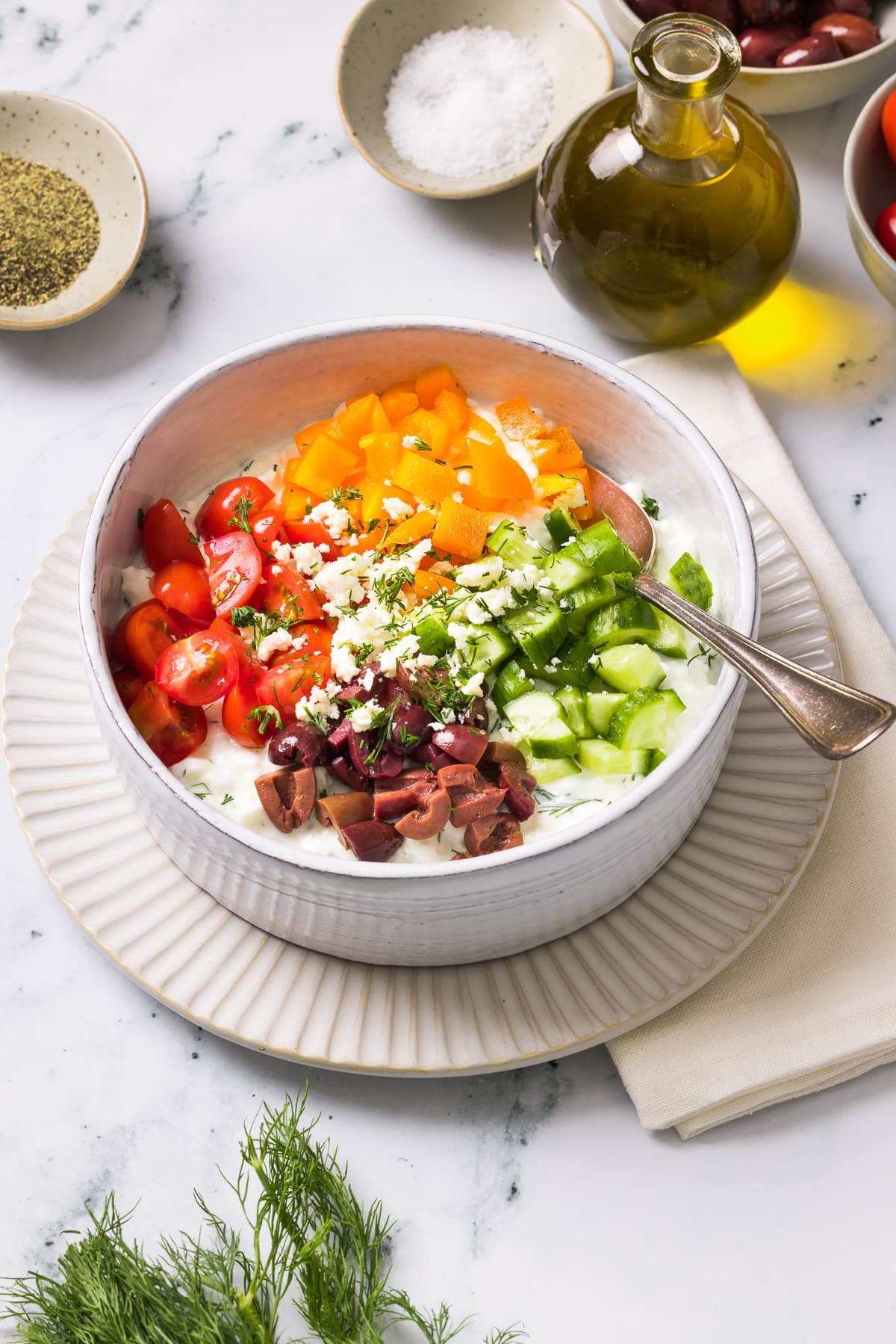
More Cottage Cheese Recipes You’ll Love
Greek Cottage Cheese Bowl
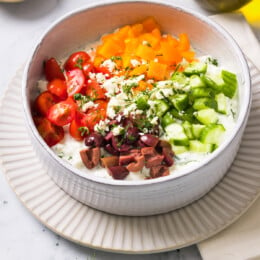
Ingredients
Instructions
-
In a small bowl mix the cottage cheese and half of the fresh dill.
-
Pour into a bowl.
-
Top with cherry tomatoes, cucumbers and bell peppers; season with pinch of salt and pepper.
-
Add olives, feta, and remaining fresh dill. Drizzle with olive oil if desired.
Last Step:
Please leave a rating and comment letting us know how you liked this recipe! This helps our business to thrive and continue providing free, high-quality recipes for you.
